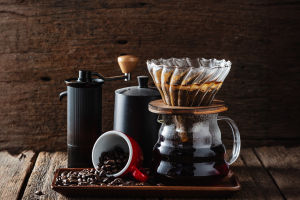You've probably slipped on ice before or watched greasy dishes magically turn clean with a bit of soap. We're so used to these everyday experiences that we rarely stop to ask: Why does this happen?
The answer isn't just "because it's slippery" or "soap cleans grease"—there's actual physics happening under your nose. Let's dig into two daily mysteries: why ice is slippery, and how dish soap cuts through oil.
1. Why Is Ice So Slippery?
You might assume ice is slippery simply because it's wet. But the truth is much more fascinating—and it starts with the concept of molecular pressure and surface melting.
Ice creates its own slippery surface.
Even when ice looks solid and dry, the topmost layer isn't quite frozen. The pressure of something stepping or sliding on it—say, a shoe, a skate blade, or a tire—causes the outermost molecules to momentarily melt, forming a super-thin layer of water. This thin layer dramatically reduces friction and creates that infamous slick surface.
But pressure isn't the only player here. At temperatures well below freezing, where pressure alone can't melt ice, there's still a microscopically thin film of liquid water. Scientists call this premelting—a kind of surface physics where molecules on the surface move more freely than the ones deeper in the ice. This layer is just a few nanometers thick, but it's enough to make walking treacherous.
The colder it gets, the less slippery ice becomes.
Here's the counterintuitive part: extremely cold ice (like below –20°C or –4°F) is less slippery than ice just below freezing. That's because the lubricating water layer can't form as easily. So ironically, ice becomes safer to walk on at extremely low temperatures.
2. How Does Soap Clean Grease?
We all know soap gets rid of grease, but have you ever wondered how? Water alone can't break down oil—if you've ever tried rinsing a greasy pan with just water, you know what happens. The magic lies in the physics of soap molecules.
Soap is a molecular double agent.
A soap molecule has two ends:
• One end is hydrophilic (water-loving),
• The other is hydrophobic (water-hating, but oil-loving).
When soap is mixed with water and oil, the hydrophobic ends bury themselves into the oil while the hydrophilic ends reach out to the surrounding water. This creates tiny bubbles called micelles, where the oil is trapped inside and surrounded by soap molecules. These micelles are then rinsed away with water—taking the grease with them.
Surface tension and emulsification are key.
Normally, water molecules stick tightly together at the surface (this is why water beads up). Soap lowers this surface tension, making it easier for water to spread and interact with the oily surface. At the same time, soap emulsifies the oil—breaking it into smaller droplets that can float away in water. That's why dishes go from greasy to squeaky clean with just a squirt of soap.
3. One More Surprising Example: Why You Can't Open a Vacuum-Sealed Jar
Ever struggled with a tight jar lid? The reason is pressure—specifically air pressure. When a jar is vacuum sealed, the air inside has been removed or reduced. The pressure outside the jar (normal atmospheric pressure) becomes much greater than the pressure inside. This difference creates a tight seal that makes the lid hard to twist off.
The trick? Break the vacuum. Tapping the lid, using a spoon to lift the edge slightly, or immersing the lid in hot water can help equalize the pressure. Once the seal breaks, the lid opens with ease.
Why This Matters
Understanding these physical principles isn't just about satisfying curiosity. It can help us:
• Walk more safely in winter by knowing when ice is most slippery
• Use cleaning products more efficiently
• Solve annoying daily problems (like stubborn jar lids) with simple tricks rooted in physics
These small things add up to a more thoughtful, empowered way of moving through the world.
Next time you nearly slip on the sidewalk or marvel at how your dish sponge cuts through gunk, pause for a second. There's a hidden world of physics behind these everyday events—and now, you're in on the secret.
Got another strange everyday thing you'd like to understand? Drop your curiosity below—we might dig into it next!


